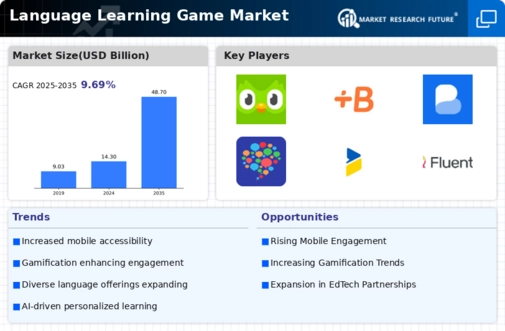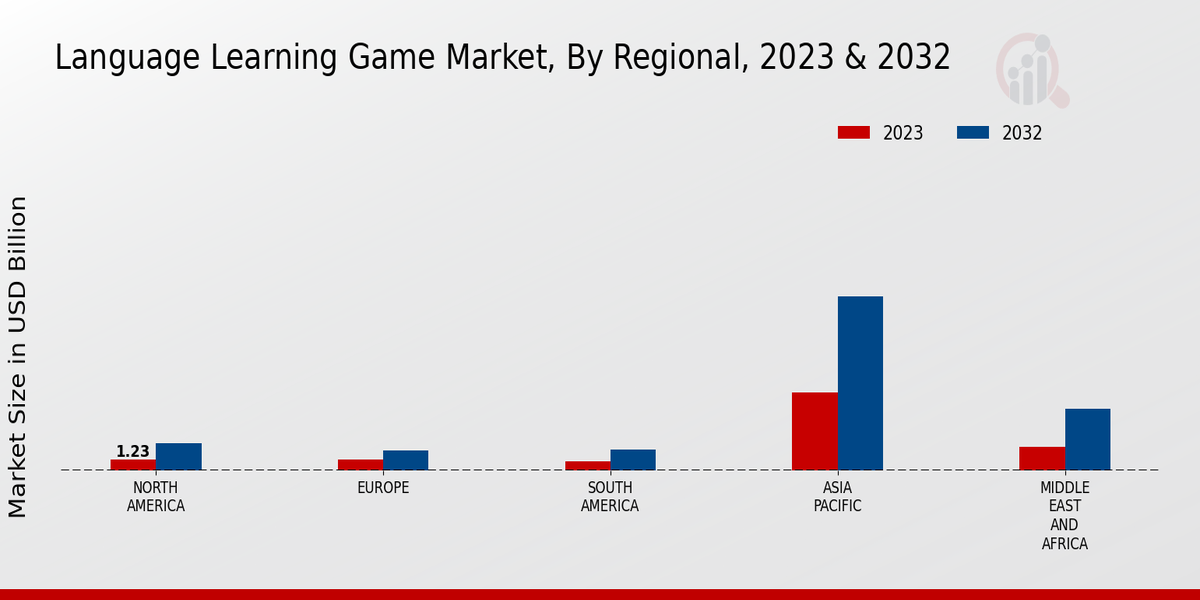Market Growth Projections
Increased Investment in EdTech
The Global Language Learning Game Market Industry is witnessing increased investment in educational technology, reflecting a broader trend towards digital learning solutions. Governments and private entities are recognizing the importance of language skills in a globalized world, leading to funding for innovative language learning platforms. This influx of capital supports the development of high-quality language games that cater to various learning styles. As a result, the market is likely to experience a compound annual growth rate of 11.75% from 2025 to 2035. This investment not only enhances the quality of language learning games but also expands their accessibility, making them available to a wider audience.
Rising Global Mobility and Migration
Rising global mobility and migration significantly influence the Global Language Learning Game Market Industry. As individuals relocate for work, education, or personal reasons, the need for language acquisition becomes paramount. Language learning games offer a flexible and engaging solution for those seeking to adapt to new environments. This trend is particularly evident in urban areas with diverse populations, where language barriers can hinder social integration. The market is poised to capitalize on this demand, as more people turn to gamified learning experiences to facilitate their language journey. This dynamic environment suggests a robust growth trajectory for the industry in the coming years.
Technological Advancements in Gaming
Technological advancements play a pivotal role in shaping the Global Language Learning Game Market Industry. Innovations in artificial intelligence, augmented reality, and virtual reality are transforming how languages are taught and learned. These technologies enable personalized learning experiences, adapting to individual user needs and preferences. For instance, AI-driven language games can analyze user performance and provide tailored feedback, enhancing the learning process. As these technologies become more accessible, they are likely to attract a broader audience, further propelling market growth. The industry is expected to benefit from these advancements, potentially contributing to a market valuation of 48.7 USD Billion by 2035.
Growing Popularity of Mobile Learning
The Global Language Learning Game Market Industry benefits from the growing popularity of mobile learning. With the proliferation of smartphones and tablets, learners increasingly prefer on-the-go solutions that fit their busy lifestyles. Language learning games designed for mobile platforms provide convenient access to language resources anytime and anywhere. This trend aligns with the broader shift towards personalized and self-directed learning, where users can tailor their educational experiences to their schedules. As mobile learning continues to gain traction, the market is likely to see an influx of new users, further driving growth and innovation in language learning games.
Growing Demand for Interactive Learning
The Global Language Learning Game Market Industry experiences a surge in demand for interactive learning solutions. As educational institutions and individuals increasingly seek engaging methods to acquire language skills, the market is projected to reach 14.3 USD Billion in 2024. This growth is driven by the recognition that traditional learning methods often fail to maintain student interest. Language learning games provide immersive experiences that enhance retention and motivation. The integration of gamification elements, such as rewards and challenges, further captivates users. Consequently, the industry is evolving to meet the needs of a diverse audience, including children and adults, thereby expanding its market reach.

























